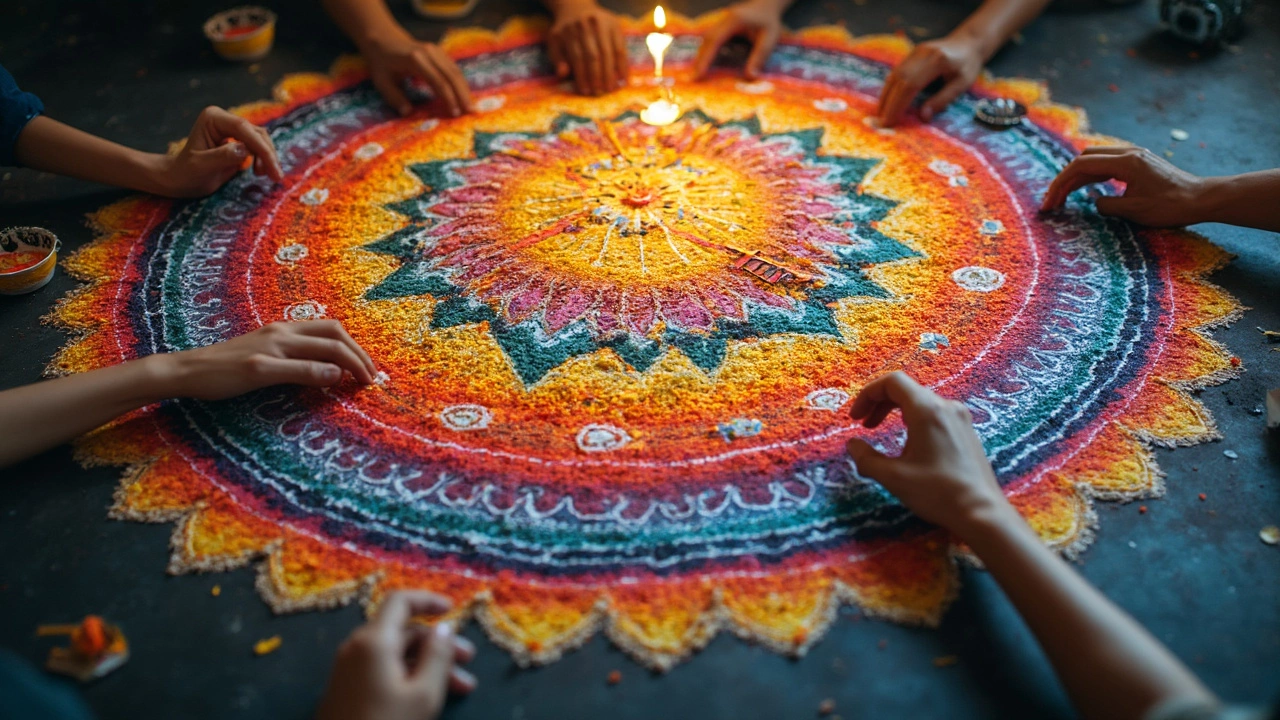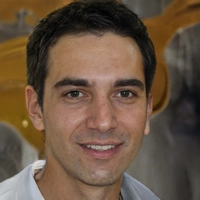Ever wondered how some people seem to continuously grow and improve, like they've cracked a secret code? It typically boils down to a solid personal development plan. The good news? There's no secret, just a series of steps that can lead you on a fulfilling journey of self-improvement.
First things first, let's talk about self-assessment. It's like looking in a mirror but for your inner self. Start by asking yourself, 'What are my strengths?' and 'Where can I improve?' Grab a notebook, jot it down, and be brutally honest. It's not about judgment, just a candid evaluation.
From there, you move on to goal setting. Don't just dream—describe it! Set SMART goals (Specific, Measurable, Achievable, Relevant, and Time-bound). Want to read more? How about, 'Finish two books a month' rather than 'Read more.' Precision will be your best friend in this phase.
Self-Assessment
Tackling self-assessment can feel like staring into a mirror that shows more than your reflection. This isn't just a once-over before you dash out the door—it's a deep dive into understanding who you are, and more importantly, who you want to become. Think of it as the cornerstone of your personal development journey.
Start with the basics. Grab a quiet space, a journal, and let your mind wander. Ask yourself, 'What are my core strengths?' Maybe you're great at problem-solving or you excel at communication. Write it all down without judgment.
Equally important is identifying areas needing improvement. And no, this isn't just listing shortcomings. It's about being aware of where you have room to grow. You might realize, 'Hey, my time management could use some work,' or 'I'd love to be a more patient listener.'
Digging Deeper with Tools
If you're stuck, try using tools like the SWOT analysis (Strengths, Weaknesses, Opportunities, Threats) but make it personal. This method helps map out where you stand and envision where you can go.
"The only journey is the one within." – Rainer Maria Rilke
External Feedback
Don't shy away from asking trusted friends or colleagues for their input. Often, we miss things about ourselves that others see clearly. Make it constructive—no harsh critics allowed in this space.
- Pick a couple of people who know you well.
- Ask open-ended questions, like, 'Where do you see I can improve?' or 'What strengths do you notice in me?'
This isn't an interrogation or an ego trip; it's about gathering insights to shape your path forward.
Setting the Stage for Change
With your self-assessment in hand, you've now got a roadmap. This is where the rubber meets the road. Your self-improvement blueprint should identify areas to build on and weaknesses to overcome, setting you up for a more intentional, growth-oriented life.
Goal Setting
Now that you've done a bit of soul-searching through self-assessment, it's time to put pen to paper and start setting some goals. The most important thing to remember here is to keep your goals crystal clear, thanks to the SMART goals approach, which stands for Specific, Measurable, Achievable, Relevant, and Time-bound. It's a bit of a mouthful, but think of it like your roadmap to success.
Getting Specific
Let’s break it down: a goal like "get fit" is way too vague. Instead, aim for something like "run a 5k in 30 minutes by June." Now that's specific. A clear target makes it easier to focus your efforts and track your progress.
Measuring Achievement
For a goal to be on solid ground, you need to make it measurable. Without a way to assess yourself, how will you know if you're moving forward? If your goal is to save, say, $1,000 in three months, you’ll know exactly what success looks like.
Keeping It Real
'Achievable' ensures you're setting a goal within reach considering your current circumstances. It’s motivating to challenge yourself, but setting a goal like flying to Mars by next year might be a tad unrealistic. 😉
The Relevant Bit
Your goal should align with your personal values and long-term objectives. So if you're all about health, a goal to participate in sports events might be spot-on. It makes your efforts feel worthwhile.
Time-Bound Goals
Finally, every goal needs a deadline. An open-ended goal risks losing priority. A realistic deadline keeps you working consistently toward your aspirations.
To make things practical, here’s a quick example:
- Goal: Lose 10 pounds
- Specific: "Lose 10 pounds through diet changes and exercise."
- Measurable: Use a scale and track your weight weekly.
- Achievable: Plan for a pound a week.
- Relevant: Ties in with a healthier lifestyle goal.
- Time-bound: Set a timeline of 3 months.
And there you have it! By following these principles, you can set inspired and achievable personal development goals that bring you closer to your desired self.

Skill Acquisition
Once you've mapped out your goals, it's time to dive into skill acquisition. Think of it as upgrading yourself, just like you would a device, but with a personal twist. The world is your oyster when it comes to learning new skills, and there's plenty of ways to get started.
First off, identify what skills align with your personal development goals. Want to get better at communication? Consider taking a public speaking class or joining a local Toastmasters club. Improve your growth by matching your skills with your goals.
Where to Learn
These days, learning new skills isn't limited to traditional classrooms. Online platforms like Coursera, Udemy, and Skillshare offer courses on almost everything under the sun. Whether it’s coding, design, or even gardening, there's something for everyone.
- Coursera: Partnered with top universities, offering formal courses with certificates.
- Udemy: A more casual platform where anyone can create a course, often more affordable.
- Skillshare: Focuses on creative skills, learn by doing projects.
Practice Makes Perfect
Acquiring a skill is half the battle; practicing it is how you make it stick. Set aside time every day or week specifically for honing your new skill. Let's be real; repetition builds muscle memory, and in this case, skill memory.
Track Your Progress
Keeping tabs on your skill development can be as simple as jotting down goals in a journal or using an app designed for tracking progress. Remember, being able to see how far you've come can be a huge motivation booster.
Here's a neat fact: A 2023 study showed that people who set specific blocks of time for skill practice were 65% more likely to continue with learning than those who didn't. It's all about building those habits.
Habit Formation
Here's the deal: building habits is the backbone of personal development. While it might seem daunting at first, creating positive habits can set the tone for consistent self-improvement. Habits are those little things you do without even thinking, like brushing your teeth or checking your phone first thing in the morning.
Why Habits Matter
Think about this: about 40% of our actions are driven by habits, according to a study by Duke University. That means nearly half of what you do every day isn't the product of conscious decisions but rather ingrained routines. So imagine harnessing that power for good by building habits that support your goals.
Steps to Build Strong Habits
- Start Small: Bite-sized goals are achievable. Want to start jogging? Begin with a short 10-minute walk every day.
- Consistency is Key: Repeating the action daily solidifies it. Pick the same time and place if possible.
- Track Your Progress: Keep a journal or use an app to log your efforts. It gives you a sense of achievement and accountability.
- Reward Yourself: Don’t forget to celebrate milestones, no matter how small. It keeps you motivated.
Avoiding Common Pitfalls
Slipping up is human. But instead of throwing in the towel after a minor slip, revisit your reasons for starting and get back on track. Get a buddy involved, too – they can provide support and keep things fun.
To wrap it up, remember that with habits, it's like building blocks for your personal growth. They may seem small on their own, but stacked together, they form a solid foundation for continuous development.

Reflection and Adjustment
Once you've set the ball rolling with your personal development plan, the journey isn't just about blind pursuit. It's essential to pause and engage in some solid reflection and, if needed, make adjustments.
Think of this as quality control for your life experiments. Ask yourself: 'What's working?' and 'What’s not?'. Setting aside time, maybe once a month to reflect can keep you aligned with your goals.
Why Reflection Matters
The act of reflection allows you to see patterns and results of your actions. Benjamin Franklin once said,
'Without continual growth and progress, such words as improvement, achievement, and success have no meaning.'It's about learning from your experiences and making informed tweaks.
Making Adjustments
If something isn't working, don't abandon ship. Instead, adjust the sails. Consider these steps:
- Identify the Barrier: What's stopping you? Is it time, resources, or motivation?
- Re-evaluate Your Goals: Are your goals still relevant, or do they need a tweak?
- Seek Feedback: Sometimes an outside perspective can shine light on solutions you haven’t considered.
As you reflect, remember that flexibility is key. The ability to pivot and adjust is often what separates those who achieve their dreams from those who drift away.
Consistency Over Perfection
Consistency in reflection and adjustment builds momentum. You might not get it perfect every time—and that's okay. Focus on progress over perfection. Keeping a growth mindset can make the difference.
John Hopkins University conducted a study that found regular reflection improves problem-solving skills by 30%. So, it's not just a 'nice to do'—it's practically essential!

